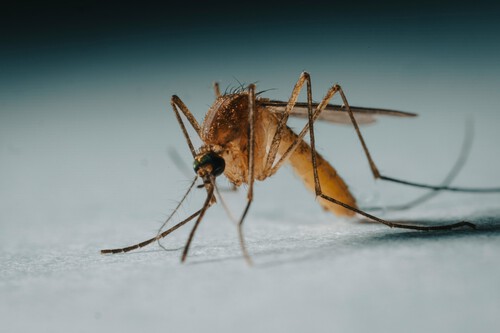Mosquitoes arrive with the heat, sneak in uninvited, and leave their mark on your skin: a red spot, an insistent itch, and a sleepless night. The mosquito needs no introduction; its buzzing is synonymous with summer. Now, we share our lives with another invisible being: AI systems. Silent and precise, they have begun to wage war on the old enemy. In this story, only one can remain.
The battle. A team of researchers at the University of South Florida, led by biologist Ryan Carney and computer engineer Sriram Chellappan, has developed an intelligent surveillance system that uses AI to identify, track, and combat the most dangerous mosquito of the moment: Anopheles stephensi. This urban malaria vector has already begun to spread across Africa.
It’s a unique method. The project’s success hinges on combining advanced technology with citizen participation. First, they’re developing clever traps equipped with AI to automatically attract, capture, and identify mosquitoes.
The project is also supported by Global Mosquito Observations Dashboard, a platform launched in 2022 that collects photographs of mosquitoes people send from their mobile phones. Thanks to a visual recognition system, the platform identifies the species and generates an interactive, real-time map that helps scientists track the most dangerous mosquitoes.
And why AI systems? Chellappan’s team has developed unique algorithms to identify a mosquito from a single photo by automatically recognizing its head, thorax, abdomen, wings, and legs. This anatomical classification enables accurate species identification, even in challenging conditions.
According to Reuters, advances in AI have made it possible to determine the location of disease-carrying mosquitoes so public health authorities can respond and prevent new outbreaks.
A global alert. There’s real urgency behind this technological deployment, as mosquitoes that carry diseases such as malaria are adapting and surviving in urban environments. However, researchers told Reuters that ingenious traps could be manufactured for less than $150, allowing for mass distribution as an early warning system in vulnerable regions.
A war on many fronts. Although AI systems promise to revolutionize the fight against mosquitoes, they’re not enough. “It’s going to take more than one strategy,” entomologist Tom Mascari told Reuters. Technology is a key ally but doesn’t replace traditional measures, such as using repellents.
What’s next? Over the next five years, Carney and Chellappan’s team plans to refine their algorithms, incorporate more species into the system, and train a new generation of African scientists. The idea is that the fight against mosquitoes should depend on technology, knowledge, and international collaboration. Perhaps for the first time, the summer buzz will be an opportunity to stay one step ahead of the enemy, not just a nuisance.
Image | Rapha Wilde (Unsplash)
Related | Katori Senko: The Japanese Method to Eliminate Mosquitoes at Home During the Summer




View 0 comments